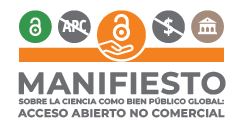The Team Building Theory in Organizations
Keywords:
team Building theory, organizations, team, culture, workAbstract
The essay aims to identify the applications of Team Building theory in organizations. For this, the work is based on a review of the models of Rubin et al (1978), Katzenbach and Smith (1993), Lombardo and Eichinger (1995), Hackman Model-Team Hackman (2002) and Tuckman (1965). In this sense, a literature review of the contributions, research and contributions of different authors was made chronologically to be detailed in the document. It is concluded that the theory of Team Building in organizations is a key factor in the
evolution from individual to group, with the support of the team leader and an organizational culture fostering teamwork.
Downloads
References
Aggarwal, Deepak; Singh, Suneeta,&Chatterjee, Ashis (2007). Team Building Intervention. Indian Journal of Industrial Relation. Vol. 42, No. 3: Pp: 445-453.
Covey, Stephen (2006). The speed of trust. New York Times Bestseller. New York, United State of America.
De Meuse, Kenneth (2017). A Comparative Analysis of the Korn/Ferry T7 Model With Other Popular Team Models. Documento en línea. Disponible en: https://www.academia.edu/
Hackman, J. Richard. (2002). Leading teams: Setting the stage for great perfomances. Harvard Business School Press. Massachusetts, United State of America.
Katzenbach, John y Smith, Douglas (1993). The Discipline of Teams. Harvard Business Review. Massachusetts, United State of America.
La Fasto, Frank y Larson, Carl (2001). When teams work best 6000 team members and leaders tellwhat it takes to succeed. International Educational and Professional Publisher. New York, United State of America.
Meliton, Cross (2017). Conoce Coscatl: Desarrollo Organizacional Experiencial/Team building y más. Video en línea. Disponible en: https://www.youtube.com/watch?reload=9&v=6x1mTd15MkU. Consulta: 10/06/2019.
Rubin, Irwin; Fry, Ronald y Plovnick, Mark (1978a). Managing Human Resources in Health Care Organizations: An Applied. Academy of Management. Vol. 3, No. 4: Pp. 931-932.
Rubin, Irwin; Plovnick, Mark y Fry, Ronald (1978b). Task-Oriented Team Development. Editorial Mc Graw-Hill. New York, United State of America.
Salas, Eduardo; Goodwin, Gerald y Shawn, Burke (2009). Team Effectiveness in Complex Organizations. The Organizational Frontiers. New York, United State of America.
Schneider, Herbert (1921). The group mind by William Mc Dougall. Journal of Philosoph, Inc. Vol. 18, No. 25: Pp: 690-697.
Svyantek, Daniel; Goodman, Scott; Benz, Lori y Gard, Julia (1999). The Relationship between Organizational Characteristics and Team Building Success. Journal of Business and Psychology. Vol. 14, No. 2: Pp: 265-283.
Tuckman, Bruce (1965). Developmental sequence in small groups. Psychological Bulletin. Vol. 63: Pp: 384-399.
Downloads
Published
How to Cite
Issue
Section
License
Copyright (c) 2019 Universidad Alonso de Ojeda, Venezuela

This work is licensed under a Creative Commons Attribution-NonCommercial-ShareAlike 4.0 International License.
All content of Ethos Journal will be free access, distributed under the Creative Commons license (BY-NC-SA).




